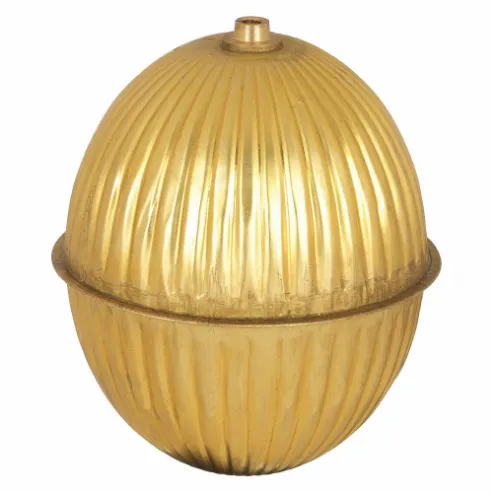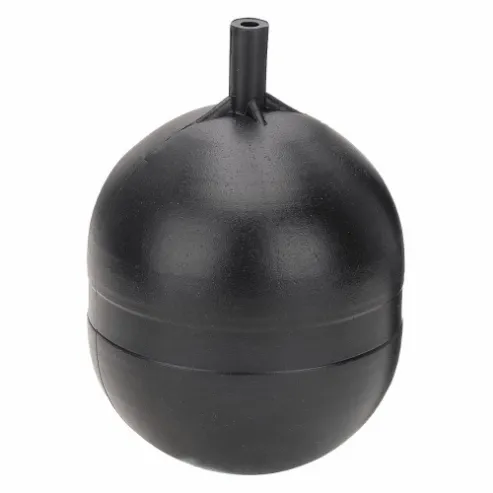Dayton 4KU66 float ball is used in water treatment plants, HVAC systems, industrial tanks and oil refineries to regulate fluid flow, prevent overflows and maintain consistent levels. Its buoyant design enables it to rise and fall with liquid levels, triggering switches or valves for automated processes. It has a round copper component measuring 4 inches in diameter. This float ball is crafted from copper, providing exceptional conductivity and corrosion resistance.
Working Mechanism:
- This float ball operates based on the principle of buoyancy.
- When it is placed in a liquid, its copper construction allows it to float on the surface.
- As the liquid level rises or falls, the float ball follows suit due to its buoyant nature.
- This movement is translated into a mechanical action through an internal connection.
- This action can trigger switches or valves in fluid control systems, enabling automated processes that depend on maintaining specific liquid levels.
Frequently Asked Questions:
Q. What are the factors to consider while choosing a float ball?
A. Major factors include liquid compatibility, temperature, buoyancy requirements, container size, mounting and environmental conditions.
Q. How to maintain this float ball?
A.
- Conduct routine inspections to check for dirt, debris, or buildup on the float ball's surface.
- Clean the float ball gently using a soft cloth or sponge to prevent damaging its surface; avoid abrasive cleaners.
- Ensure that float ball remains securely attached to the control mechanism to maintain accurate fluid level control.
Q. How to install Dayton 4KU66 float ball?
A.
- Choose a suitable location inside the container for float ball placement.
- Ensure the mounting surface is clean and free from sharp edges.
- Secure the float ball's mounting hardware using screws, bolts or brackets.
- Attach the float ball onto the mounting assembly, allowing free vertical movement.
- Connect the control mechanism to the float ball assembly as per manufacturer's instructions.
- Adjust control settings to match desired liquid level activation points.
- Test the float ball by filling the container and observing its movement.
 Change Country
Change Country


